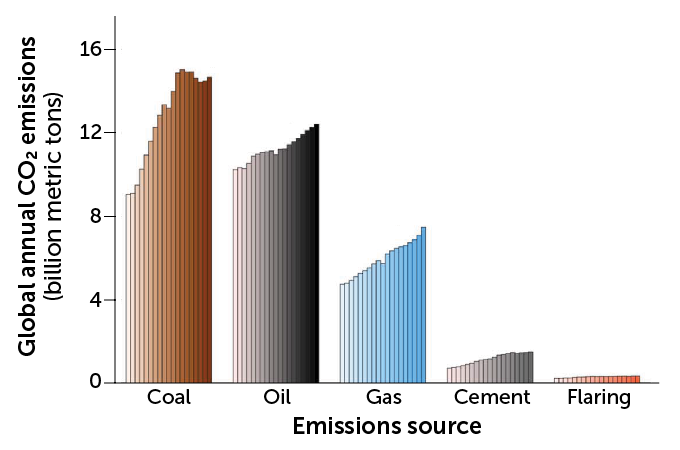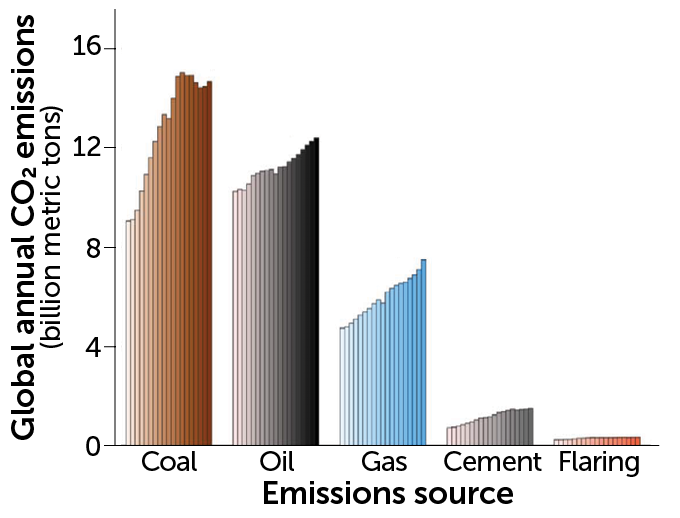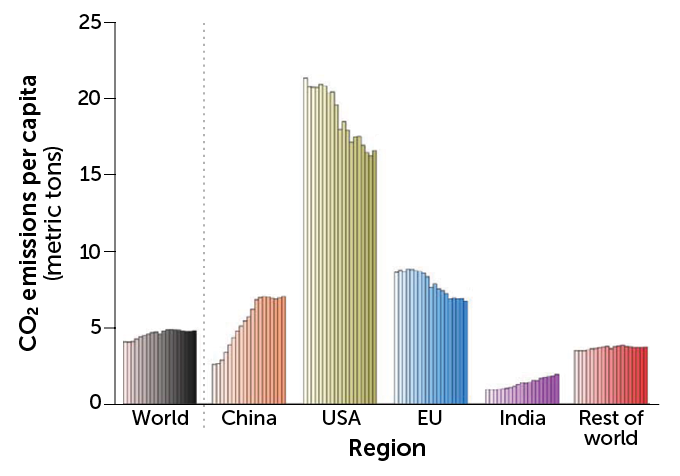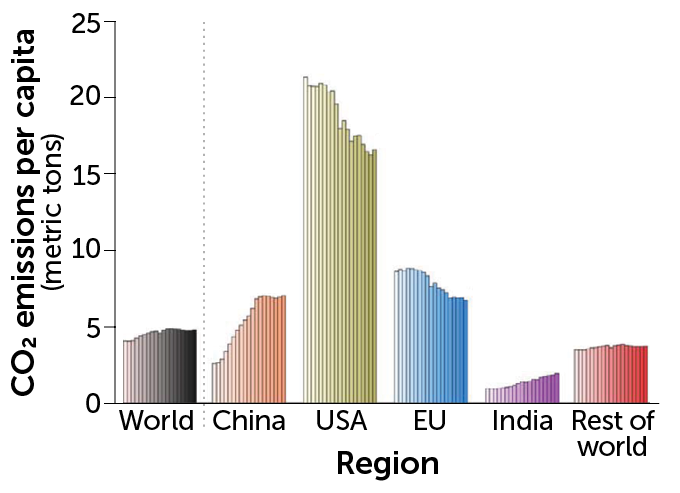
Global carbon emissions from burning fossil fuels will reach yet another record high this year, a new study says, despite increasing use of renewable resources like solar power.
Halbergman/E+/getty images plus
- More than 2 years ago
Despite decades of warnings from scientists about the dangers of climate change, the world is on track to hit a new record high for climate-warming carbon dioxide emissions from burning fossil fuels.
By year’s end, fossil fuels will have flooded the atmosphere with about 36.8 billion metric tons of CO2 in 2019 — up from 36.57 billion tons in 2018, according to monthly emissions data reported by and estimated for different regions. And increasing use of oil and natural gas means those emissions levels will probably keep rising, researchers predict online December 4 in Environmental Research Letters.
The usual suspects
Total carbon dioxide emissions are still rising globally from fossil fuel use as well as cement manufacturing and flaring, or controlled gas burning during oil extraction (bars represent global emissions from each source for each year from 2000 to 2018). The release of CO2 from coal burning is tapering off, but “increases in natural gas and oil use are more than offsetting the emissions from a declining coal industry,” says environmental scientist Rob Jackson of Stanford University.
Global CO2 emissions from different fossil fuels, 2000-2018


Many countries are harnessing renewable energies. In the United States alone, wind power generation rose about 8 percent in 2019 from 2018, while solar went up an estimated 11 percent. But that trend hasn’t been enough to stem the global emissions that are driving climate change, melting polar ice caps and revving up hurricanes (SN: 9/25/19).
“Most of the renewables being built today aren’t displacing coal and other fossil fuels — they’re [just] adding new energy,” says environmental scientist Rob Jackson of Stanford University. In another paper published December 4 in Nature Climate Change, Jackson and colleagues argue for global climate policies that directly cut fossil fuel use, such as retiring coal-fired power plants and deploying technology that siphons carbon from the atmosphere.
“Coal is the only fossil fuel that has shown a hint of declining,” Jackson says. Global coal usage is down slightly, by 0.9 percent in 2019 — with a 10.5 percent drop in the United States and a 10 percent decline in the European Union, his team estimates. But global natural gas and oil use rose 2.6 percent and 0.9 percent respectively, canceling out the benefit of coal’s marginal decline.
CO2 emissions are still rising in China, India and much of the developing world, but U.S. and European emissions dropped by about 1.7 percent. That’s promising, Jackson says, but the United States is still using “more than our fair share of fossil fuels.” In 2018, the average global citizen generated about 4.8 metric tons of CO2 emissions; the average American was responsible for 16.6 tons.
Big belchers
U.S. and European Union emissions from fossil fuels may be declining, but the United States and Europe still produce way more CO2 per capita than other countries (bars represent annual per capita emissions for each year from 2000 to 2018). The United States produced about 16.6 metric tons of CO2 per person in 2018, compared with 7 metric tons per person in China and 6.7 metric tons per person in Europe.
Carbon dioxide emissions per person, 2000-2018








